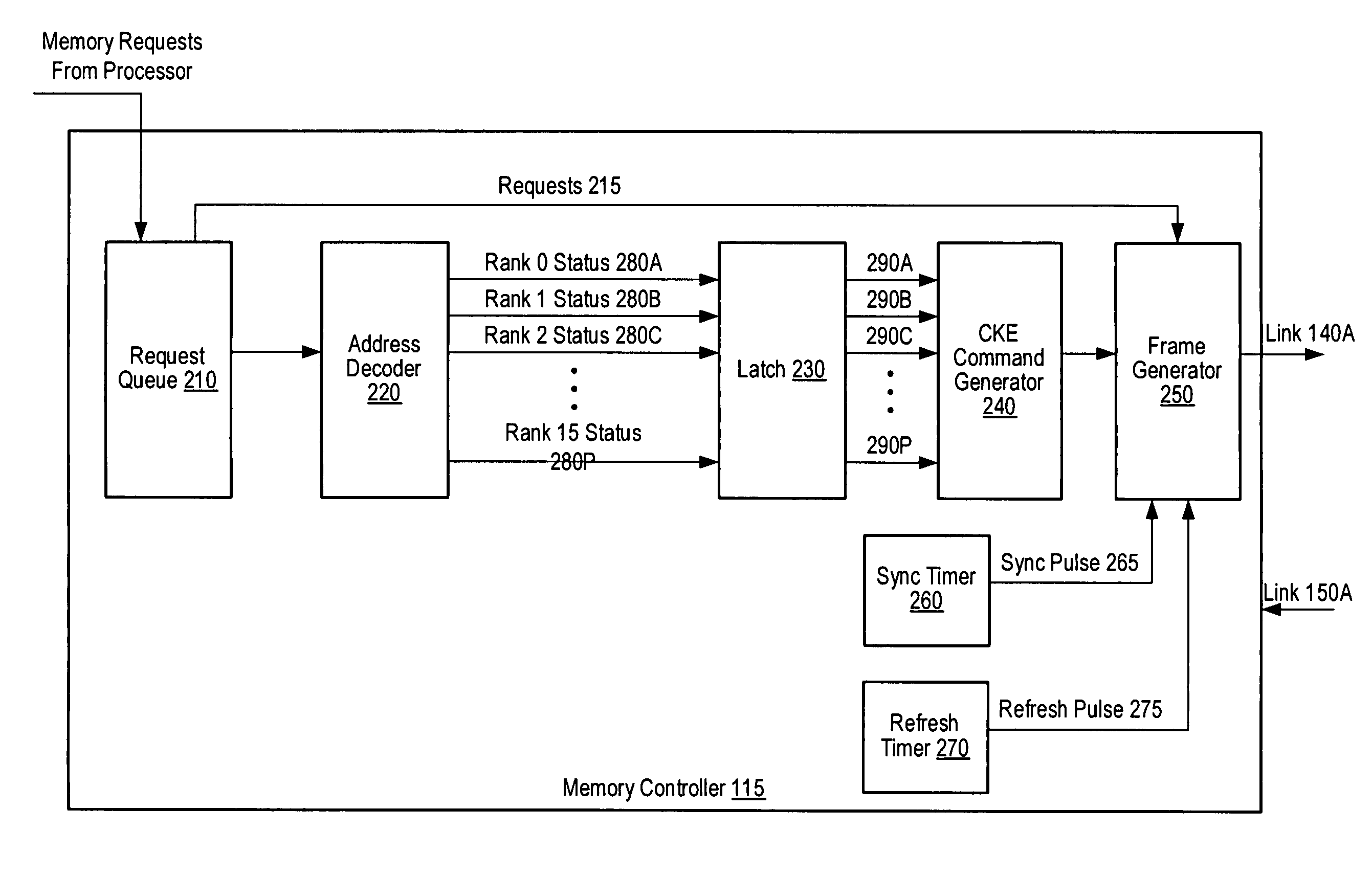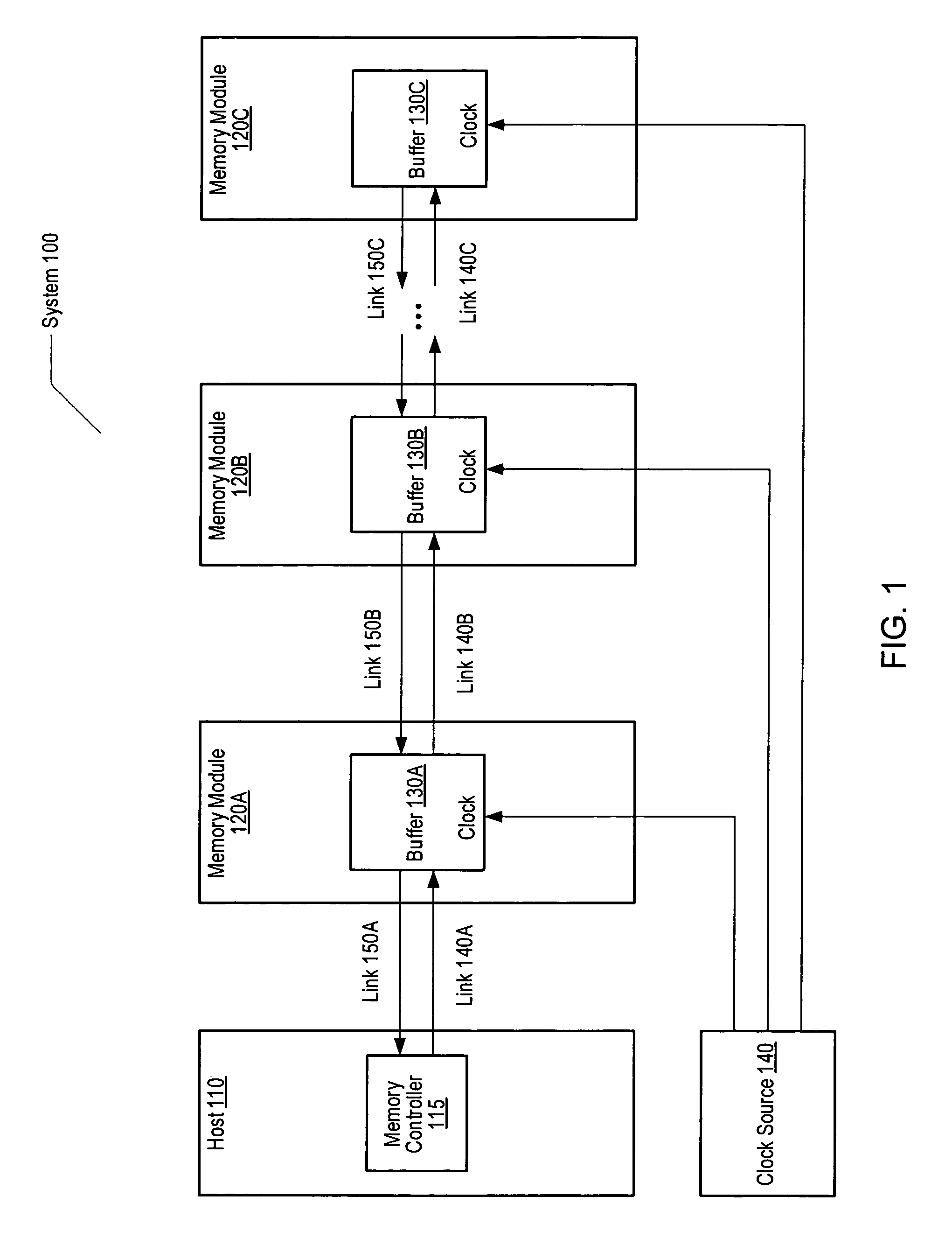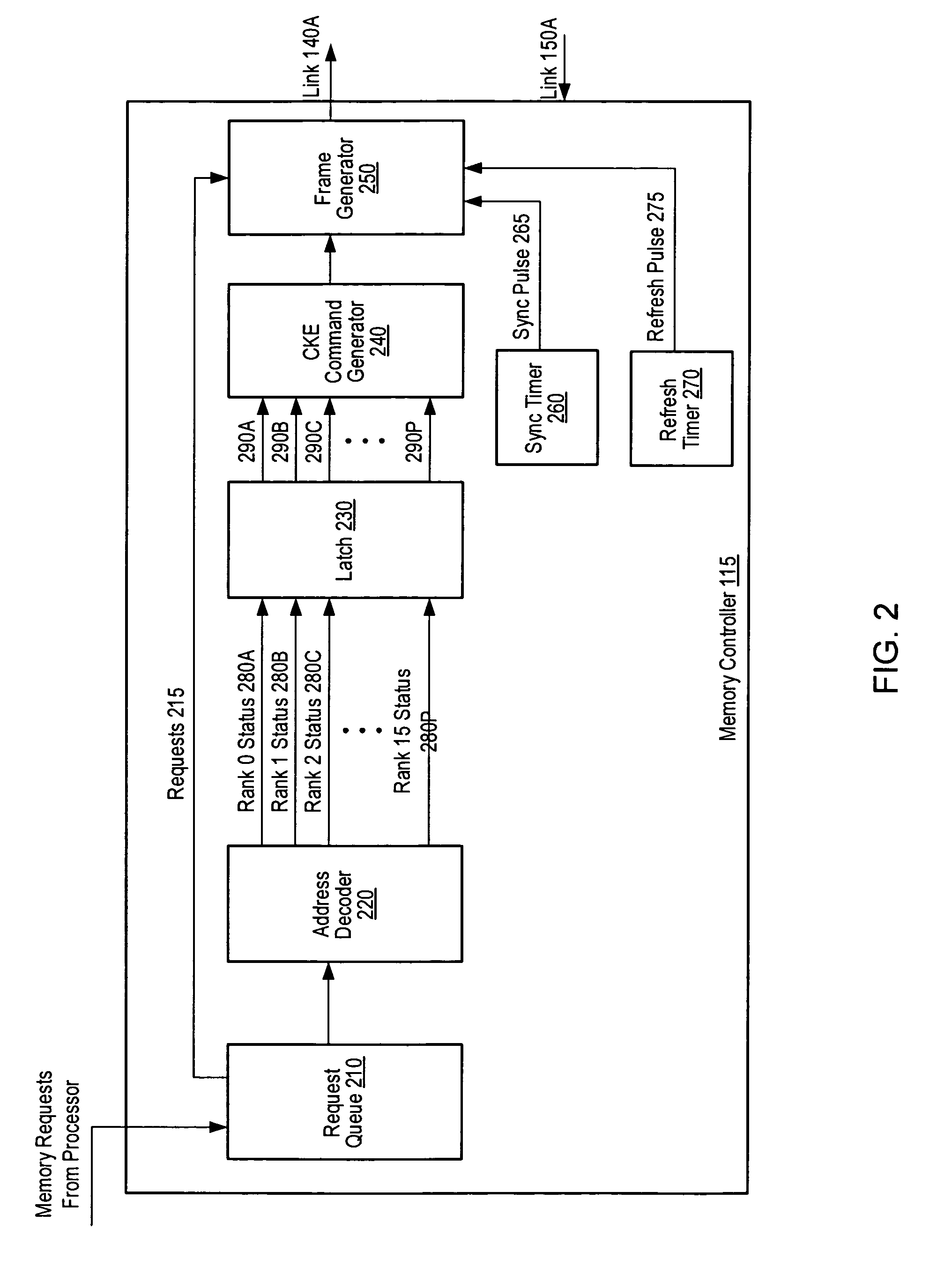Clock enable throttling for power savings in a memory subsystem
a technology of memory subsystem and clock, which is applied in the direction of liquid/fluent solid measurement, sustainable buildings, instruments, etc., can solve the problems of increasing the electrical load of parallel data and address buses, increasing the power consumption of memory systems, and increasing the electrical load of memory systems
- Summary
- Abstract
- Description
- Claims
- Application Information
AI Technical Summary
Benefits of technology
Problems solved by technology
Method used
Image
Examples
Embodiment Construction
[0021]FIG. 1 is a generalized block diagram of one embodiment of a computer memory system 100 including a host 110, one or more memory modules 120A-120C, and a clock source 140. In the discussions that follow, elements designated by a number followed by a letter may be referred to collectively using the number alone. For example, memory modules 120A-120C may be referred to collectively as memory modules 120. In the illustrated embodiment, host 110 may be a processor that includes a memory controller 115. In an alternative embodiment, a processor and a memory controller may be separate elements of host 110.
[0022]In one embodiment, each of memory modules 120 may be a fully buffered dual inline memory module (FB-DIMM) that includes a respective buffer 130A-130C. Buffers 130 may provide an interface between an array of DRAM devices and other FB-DIMMs or host 110 within system 100. The JEDEC Solid State Technology Association has published a draft specification for FB-DIMMs. The JEDEC FB...
PUM
 Login to View More
Login to View More Abstract
Description
Claims
Application Information
 Login to View More
Login to View More - R&D
- Intellectual Property
- Life Sciences
- Materials
- Tech Scout
- Unparalleled Data Quality
- Higher Quality Content
- 60% Fewer Hallucinations
Browse by: Latest US Patents, China's latest patents, Technical Efficacy Thesaurus, Application Domain, Technology Topic, Popular Technical Reports.
© 2025 PatSnap. All rights reserved.Legal|Privacy policy|Modern Slavery Act Transparency Statement|Sitemap|About US| Contact US: help@patsnap.com



